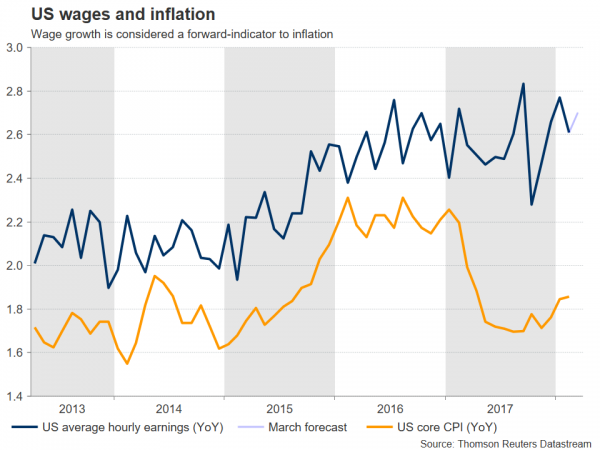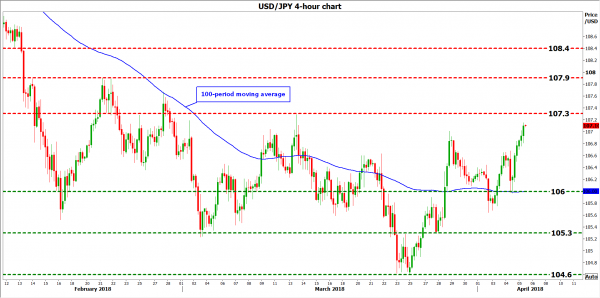Friday is almost guaranteed to bring fresh volatility to the US dollar, which has been trending sideways since the middle of January. Not only will the US release its all-important employment data for March at 1230 GMT, but a few hours later at 1730 GMT, Fed Chairman Jerome Powell will deliver remarks on the economic outlook, and investors will be hanging on his lips for any fresh policy signals.
In March, nonfarm payrolls are forecast to have risen by 195k, after a surprisingly strong 313k in February. The unemployment rate is projected to have ticked down to 4.0% from 4.1% previously, bringing it to a low last seen in 2000. Meanwhile, average hourly earnings are expected to have accelerated to 2.7% year-on-year, from 2.6% in the previous month.
As has been the case with recent US jobs reports, investors are likely to focus predominantly on the earnings numbers – assuming of course that there are no major surprises in nonfarm payrolls or the unemployment rate. Recall that back in early February, a surprising acceleration in wages was among the factors that triggered the turmoil in financial markets – resulting in a sharp selloff in stocks and a modest recovery in the dollar, which up until that point was plunging.
Wage growth is one of the most important indicators, for central bankers at least, because it is considered a precursor to inflation. Economic theory proposes that in a tight labor market, as is the case with the US now, companies will encounter difficulties finding skilled workers, and will need to raise the salaries they offer to attract new talent. In turn, those firms that are now faced with higher labor costs will have to raise the prices on their products to compensate, generating higher inflation, or see their profits fall. Thus, accelerating wages are broadly seen as a sign of higher inflation down the road.
Linking this theory to real life, since it’s the Fed’s job to keep inflation stable around 2%, any sign that inflation is set to accelerate leads to speculation the central bank will have to respond by raising interest rates more aggressively. Such expectations usually support the dollar, but hurt equity indices. Conversely, anything pointing to inflation remaining subdued typically weighs on the dollar and boosts stocks, on speculation that rates will remain lower for longer.
Turning to Powell, he will be speaking on the US economic outlook, so comments on policy are all but certain. Nonetheless, considering the lack of major developments since investors last heard from him a couple of weeks ago, he is somewhat unlikely to say anything groundbreaking. Economic data are treading water, with the labor market being strong but inflationary pressures still largely absent, while recent trade uncertainties present downside risks, all factors arguing for another neutral policy message by the Fed chief that does not tip the scale in either direction too much.
Looking at what is priced into the markets, investors have fully discounted another 25bps Fed rate hike by the end of the year, and they also see an 80% probability for a second one according to the Fed funds futures. Any upside surprise in the employment data, especially in the earnings figures, or a generally optimistic tone by Chairman Powell could cement expectations that the Fed will raise rates twice more this year and thereby, help the dollar recover. Dollar/yen could break above the 107.30 barrier, identified by the peaks of March 13, and head for a test of the 107.90 zone, marked by the February 21 peaks. Further bullish advances could bring into play the 108.40 territory, defined by the lows of February 12.
On the downside, in case of a disappointment in the data or a cautious stance by Chair Powell that pushes back rate-hike expectations, dollar/yen could edge lower for another test of the 106.00 round figure, which also coincides with the 100-period moving average on the 4-hour chart. A downside violation of that level would turn the focus initially to 105.30, the March 27 trough, and subsequently to the pair’s recent lows, at 104.60.














